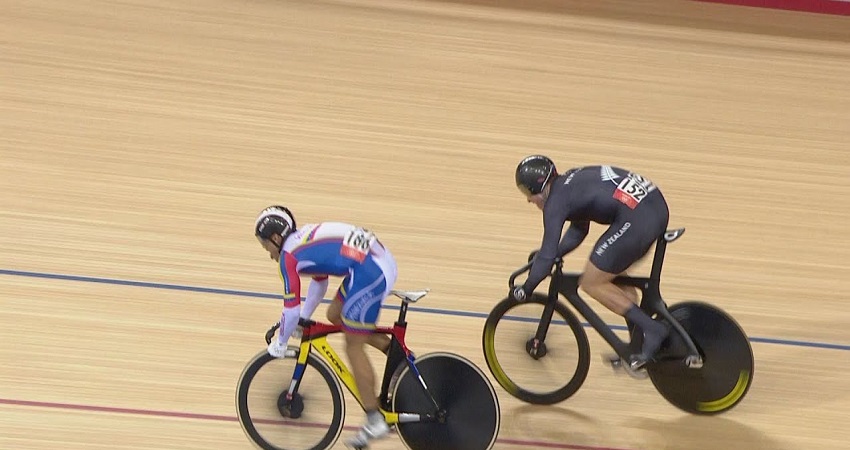
Can You Use Velodrome Bike For Uphill Cycling?

Yes, a velodrome bike is not suitable for uphill cycling due to its fixed gear and lack of gears for varying resistance on steep slopes. Cycling uphill requires the use of different gears and adjustments to manage the resistance and maintain a comfortable level of effort.
Velodrome bikes are specifically designed for track racing and excel in speed and agility on a flat, smooth surface. With their fixed gear and minimal aerodynamic design, they are not geared for climbing steep inclines. When considering uphill cycling, it is important to choose a bike with a wide range of gears, allowing you to adjust the resistance as needed.
Advantages Of Using A Velodrome Bike
Velodrome bikes offer several advantages, but using them for uphill cycling might not be the best option. These specialized bikes are designed for track racing and perform best on flat surfaces, making them less suitable for uphill terrain.
Using a Velodrome bike offers several advantages that make it a preferred choice for cyclists when it comes to uphill cycling. Let’s explore some of the key advantages below:
Increased Speed
Riding a Velodrome bike allows you to achieve increased speed, which can be highly beneficial for uphill cycling. The design of the Velodrome bike, with its lightweight frame, aerodynamic features, and muscular efficiency, enables you to pedal faster and propel yourself up inclines with greater ease.
Efficiency On Flat Surfaces
In addition to its speed on uphill climbs, a Velodrome bike also offers exceptional efficiency on flat surfaces. The bike’s smooth and responsive gears, advanced drivetrain technology, and streamlined structure help to minimize drag and maximize your pedaling power, allowing you to maintain a consistent pace on level terrains.
Whether you are cycling uphill or on flat surfaces, a Velodrome bike’s advantages extend beyond just the increase in speed and efficiency mentioned above. Some additional benefits of using a Velodrome bike include:
- Enhanced maneuverability, allowing you to navigate tight corners and paths with ease.
- Increased stability and control, ensuring a safer and more enjoyable riding experience.
- Improved power transfer, enabling you to utilize your leg strength more effectively.
- Reduced fatigue, thanks to the bike’s ergonomic design and optimized weight distribution.
- Enhanced acceleration, allowing you to quickly build momentum and conquer challenging terrains.
In conclusion, using a Velodrome bike for uphill cycling can provide you with numerous advantages. From increased speed and efficiency to enhanced maneuverability and stability, a Velodrome bike is designed to optimize your performance and make your cycling experience even more rewarding.
Challenges Of Using A Velodrome Bike For Uphill Cycling
While a velodrome bike is designed for speed on a smooth and flat track, taking it uphill presents a new set of challenges. These challenges can significantly affect the performance and overall experience of the cyclist. It’s important to understand these challenges before attempting uphill cycling with a velodrome bike.
Lack Of Gearing Options
One of the main challenges of using a velodrome bike for uphill cycling is the lack of gearing options. Velodrome bikes are typically single-speed or fixed-gear bikes, meaning they only have one gear ratio. This gear ratio is optimized for high speeds on a flat surface, making it difficult to tackle steep inclines.
This lack of gearing options can make uphill cycling with a velodrome bike extremely labor-intensive. Pedaling at a high cadence on a steep uphill gradient can quickly exhaust the cyclist’s energy reserves and make the ascent much more challenging than with a bike equipped with a wider range of gears.
Weight Disadvantage
Another significant challenge of using a velodrome bike for uphill cycling is the weight disadvantage. Velodrome bikes are designed to be lightweight for maximum speed on the track. However, this lightweight design can work against the cyclist when faced with uphill climbs.
The lack of additional components such as gears, brakes, and heavier frames makes velodrome bikes considerably lighter compared to road or mountain bikes. While this weight advantage is beneficial on a flat track, it can become a disadvantage when the cyclist needs to generate more power to conquer uphill terrains.
The lightweight nature of velodrome bikes may result in less stability when climbing uphill, especially when dealing with uneven surfaces or strong crosswinds. It requires exceptional skill from the cyclist to maintain balance and control under such circumstances.
In conclusion, while it is technically possible to use a velodrome bike for uphill cycling, it is not recommended due to the challenges it presents. The lack of gearing options and the weight disadvantage make uphill climbs laborious and physically demanding.
Tips And Techniques For Uphill Cycling With A Velodrome Bike
Learn valuable tips and techniques to conquer uphill cycling with a Velodrome bike. Discover how this unique bike can be utilized efficiently on challenging terrain, empowering riders to tackle steep inclines with ease. Improve your uphill cycling skills and make the most of your Velodrome bike’s capabilities.
When it comes to uphill cycling, using a velodrome bike can present a unique set of challenges. However, with the right tips and techniques, you can make the most out of your velodrome bike and conquer those uphill climbs with confidence. In this article, we will explore Interval Training and Proper Body Positioning as two crucial factors for uphill cycling with a velodrome bike.
Interval Training:
Interval training is a highly effective method to improve your uphill cycling performance with a velodrome bike. By alternating between high-intensity bursts of effort and recovery periods, you can develop your cardiovascular endurance and build the necessary leg strength. Incorporate interval training into your cycling routine by following these steps:
- Warm up for 10 minutes with a light-paced cycling to prepare your muscles for the upcoming high-intensity intervals.
- Select a challenging uphill route where you can safely perform your intervals.
- Begin the first interval by cycling at maximum intensity for around 1-2 minutes, pushing yourself to the limit.
- Follow the high-intensity phase with a recovery period of around 2-3 minutes, cycling at a slower pace.
- Repeat the interval and recovery cycle for a total of 4-6 times.
- Finish your training session with a cool-down period of light cycling for 10 minutes to allow your body to recover gradually.
Proper Body Positioning:
When cycling uphill with a velodrome bike, maintaining the proper body positioning is crucial for effective power transfer, stability, and reducing strain. Follow these tips to achieve a proper body position during uphill cycling:
- Keep your upper body relaxed and centered over the bike, avoiding excessive tension in your shoulders and arms.
- Shift your weight slightly forward to engage your core muscles and improve power transfer to the pedals.
- Bend your elbows and maintain a light grip on the handlebars for better control and balance.
- Focus on maintaining a steady cadence and avoid overexerting yourself by using the appropriate gear for the incline.
- Engage your glutes and core muscles to support your lower back and maintain proper posture.
- Lean forward slightly to counterbalance the uphill slope and distribute your weight evenly.
By incorporating interval training and practicing proper body positioning, you can optimize your uphill cycling performance with a velodrome bike. Remember to gradually increase the intensity of your training sessions and listen to your body’s signals to avoid overexertion and injury. Uphill cycling with a velodrome bike may present unique challenges, but with dedication and practice, you can conquer those hills and reach new heights on your cycling journey.
Modifications To Improve Uphill Performance On A Velodrome Bike
Improve uphill performance on a velodrome bike with modifications tailored for challenging inclines. Explore techniques to optimize your ride, enhancing power and speed on uphill climbs using a velodrome bike.
Adding Gearing Options
When it comes to uphill cycling on a velodrome bike, having the right gearing options becomes crucial. Velodrome bikes are designed for flat and banked tracks, so they typically come with a single fixed gear or a limited number of gear ratios. However, you can add gearing options to improve your uphill performance.
By installing a freewheel or a cassette on the rear wheel, you can have multiple gears for climbing steep inclines. This allows you to find the ideal gear ratio that matches your pedaling cadence and the difficulty of the uphill terrain.
Reducing Weight
Another important modification to consider when aiming to enhance uphill performance on a velodrome bike is reducing its weight. Velodrome bikes are designed to be aerodynamic and sturdy, but the added weight can be a disadvantage when facing uphill challenges. To shed some extra weight, you can start by replacing heavy components with lighter alternatives.
For example, consider using a carbon fiber frame or upgrading to lightweight aluminum rims. Additionally, swapping heavy steel components for lighter titanium or carbon fiber parts can have a significant impact on the overall weight of your bike. Remember, the lighter your velodrome bike, the easier it will be to climb those uphill sections with more agility and speed.
Final Thoughts
Can a velodrome bike be used for uphill cycling? While velodrome bikes are designed for flat, banked tracks, they may not be suitable for uphill riding due to their lightweight and specific gear ratios. It is recommended to use a bike with appropriate gearing and components for uphill cycling.
Consider Your Goals And Priorities
Before deciding to use a velodrome bike for uphill cycling, it’s important to consider your goals and priorities. While a velodrome bike is designed for riding on a smooth, banked track, it may not be the best choice for tackling steep inclines.
When it comes to uphill cycling, the most important factor to consider is the gearing of your bike. Velodrome bikes typically have a fixed gear, meaning you cannot change gears to make it easier or harder to pedal. This can make uphill cycling more challenging, as you won’t have the option to switch to a lower gear to tackle steep gradients.
If your goal is to improve your climbing ability and tackle challenging uphill routes, it may be worth considering a different type of bike that offers a wider range of gears. A road bike or a mountain bike, for example, would allow you to adjust the gear ratio to match the terrain and your fitness level.
Prioritizing your comfort and enjoyment is also essential. Uphill cycling can be physically demanding, and having a bike that is specifically designed for these types of terrains can make the experience more enjoyable. While velodrome bikes are built for speed and maneuverability on the track, they may not provide the comfort and stability needed for extended uphill climbs.
Train And Prepare Accordingly
If you do decide to use a velodrome bike for uphill cycling, it’s important to train and prepare accordingly. Uphill cycling places different demands on your body compared to riding on a velodrome track, so it’s crucial to adapt your training regimen.
One of the key areas to focus on is strengthening your leg muscles. Uphill cycling requires more power and endurance, so incorporating exercises like squats, lunges, and leg presses into your training routine can help prepare your muscles for the additional strain.
Additionally, practicing hill intervals can help improve your cardiovascular fitness and build endurance. Find a hilly route or use a stationary bike with adjustable resistance to simulate uphill conditions. Begin with shorter intervals and gradually increase the duration and intensity of your workouts.
It’s also important to remember that safety should always be a priority. Uphill cycling can be more challenging and potentially more dangerous than riding on a velodrome track. Be sure to wear appropriate safety gear, including a helmet, and always follow local traffic regulations.
In conclusion, while it’s technically possible to use a velodrome bike for uphill cycling, it may not be the most practical or comfortable choice. Consider your goals and priorities, and choose a bike that is best suited for the demands of uphill terrain. Train and prepare accordingly, focusing on strengthening your muscles and improving your endurance. With the right bike and proper training, you’ll be ready to conquer those uphill challenges with confidence!
Frequently Asked Questions On Can You Use Velodrome Bike For Uphill Cycling?
Can You Use A Velodrome Bike For Uphill Cycling?
Yes, you can use a velodrome bike for uphill cycling. However, it may not be the most efficient option for climbing due to its fixed gear and aerodynamic design. It is designed for high-speeds on flat surfaces, so consider factors like gear ratio and weight before attempting uphill rides.
Conclusion
While a velodrome bike may not be the optimal choice for uphill cycling, it is still possible to use it with some adjustments. It is important to consider the bike’s gear ratios, weight distribution, and overall design when tackling uphill terrain.
Ultimately, the choice depends on the individual’s preference and specific cycling goals. With the right modifications and training, one can still enjoy the challenges of uphill cycling on a velodrome bike. So, don’t let the limitations deter you from exploring new terrains and pushing your cycling limits.




